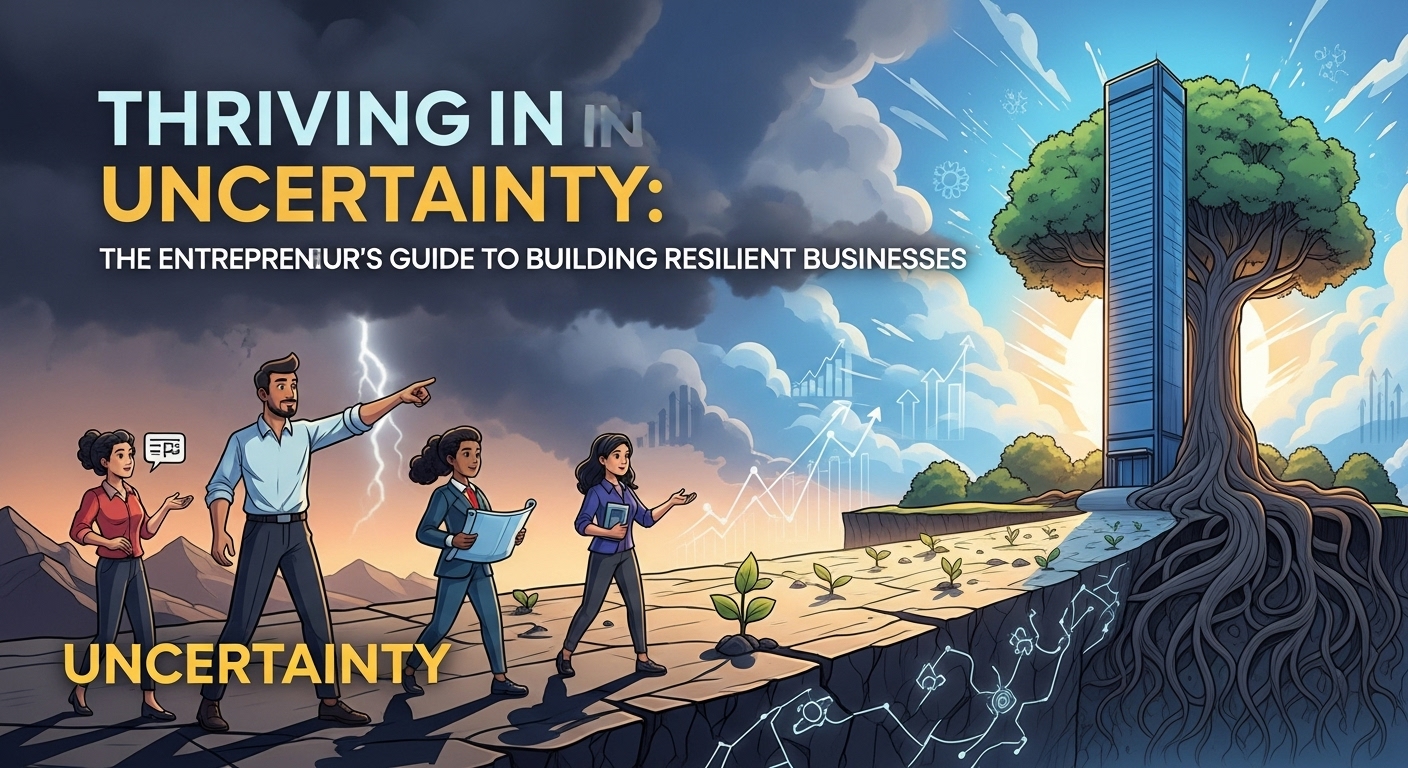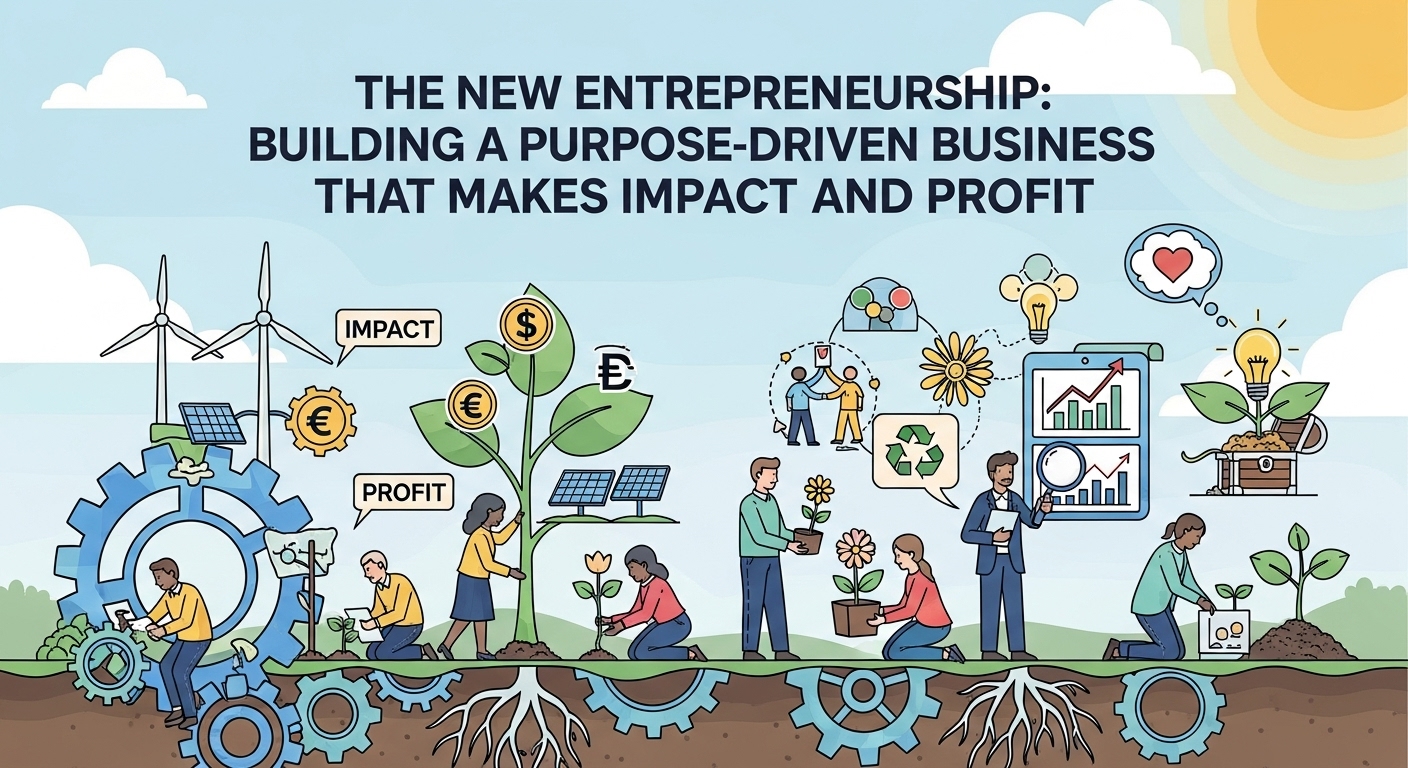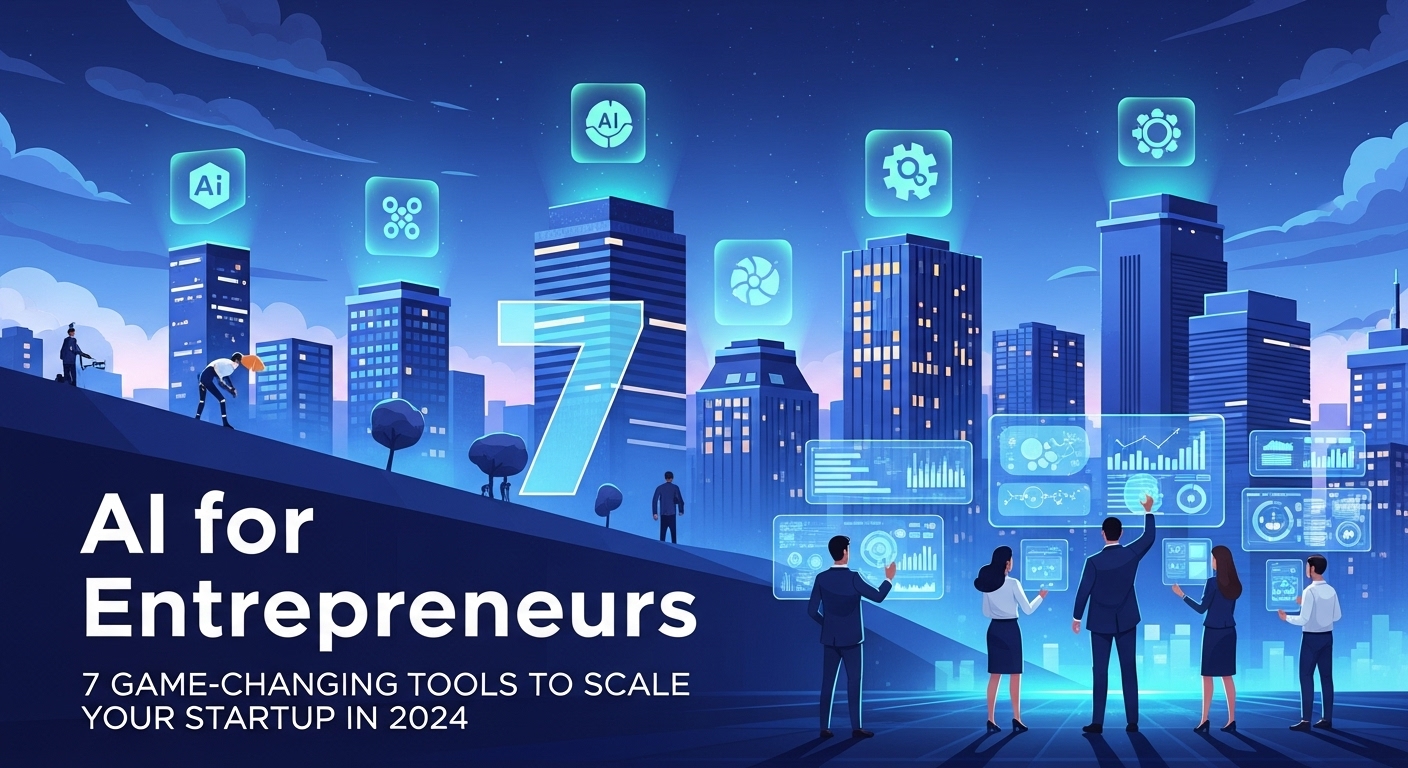The Only Constant is Change: Embracing Uncertainty in Modern Entrepreneurship
In the world of entrepreneurship, uncertainty isn’t a bug; it’s a feature. From shifting market dynamics and technological disruptions to global pandemics and economic volatility, the landscape is in a perpetual state of flux. While many see this as a threat, the most successful entrepreneurs see it as an opportunity. The key isn’t to predict the future—an impossible task—but to build a business so robust, agile, and adaptable that it can weather any storm and emerge stronger. This is the essence of business resilience. It’s about moving beyond mere survival and learning how to thrive amidst chaos. This guide will walk you through the core principles and actionable strategies for building a truly resilient business, transforming uncertainty from a source of fear into a catalyst for innovation and growth.
What is Business Resilience? More Than Just Bouncing Back
When people talk about resilience, they often use the analogy of a rubber band snapping back into shape. While this captures part of the picture, true business resilience is far more dynamic. It’s not just about returning to the pre-crisis status quo; it’s about learning, adapting, and evolving through the disruption. A resilient business has the capacity to absorb stress, recover critical functionality, and, most importantly, capitalize on the new opportunities that arise from change.
The Three Phases of Resilience
Think of resilience as a three-part journey:
- Anticipation and Prevention: This involves proactively identifying potential risks and vulnerabilities. It’s about building strong foundations—financially, operationally, and culturally—that can withstand initial shocks.
- Adaptation and Response: When a crisis hits, this is the ability to pivot quickly. It requires agile decision-making, clear communication, and flexible systems that can be reconfigured to meet new demands.
- Recovery and Growth: This is the phase where true resilience shines. It’s about analyzing the lessons learned from the disruption and integrating them into the business model to become stronger, smarter, and better prepared for the future.
Ultimately, a resilient approach to entrepreneurship fosters a culture of continuous improvement, where every challenge is viewed as a data point for building a more robust enterprise.
The Core Pillars of a Resilient Business Model
Building a resilient business isn’t about a single magic bullet; it’s about strengthening several interconnected pillars. Focusing on these key areas will create a powerful foundation that can support your venture through thick and thin.
Financial Prudence and Proactive Cash Flow Management
Cash is the lifeblood of any business, and in times of uncertainty, it becomes the oxygen. A resilient business is one that has a firm grip on its finances. This starts with maintaining a lean operational structure, minimizing unnecessary overhead, and building a substantial cash reserve—often called a ‘war chest’—that can cover several months of expenses. Regularly review your budget, negotiate better terms with suppliers, and implement strict credit control with clients. More than just having cash, it’s about understanding your cash flow. Use forecasting tools to model different scenarios (e.g., a 30% drop in revenue) to understand your financial breaking points and plan accordingly.
Strategic Diversification of Revenue Streams
Relying on a single product, service, or major client creates a single point of failure. If that one source dries up, your entire business is at risk. Resilience is built on diversification. This doesn’t mean chasing every shiny object. Instead, it means strategically exploring adjacent opportunities. Could you offer a ‘lite’ version of your service as a subscription? Can you package your expertise into a digital product like an online course? Can you expand into a new customer segment or geographic market? By building multiple, complementary revenue streams, you create a safety net that protects your business from market-specific downturns.
Fostering an Agile and Empowered Team Culture
Your team is your greatest asset in navigating uncertainty. A resilient culture is one built on trust, transparency, and psychological safety. When employees feel safe to voice concerns, propose new ideas, and even fail without fear of retribution, the organization becomes a hotbed of innovation. Empower your team by decentralizing decision-making where possible. Train them in multiple roles (cross-training) so that the business can continue to function even if key personnel are unavailable. Most importantly, communicate openly and honestly, especially during tough times. A well-informed team is an engaged team, ready to rally together to solve problems.
Leveraging Technology for Ultimate Flexibility
Modern technology offers incredible tools for building operational resilience. Cloud-based infrastructure allows your team to work from anywhere, ensuring business continuity during physical disruptions. Automation can handle repetitive tasks, freeing up your team to focus on high-value, strategic work. Customer Relationship Management (CRM) systems provide invaluable data on customer behavior, allowing you to adapt your offerings to their changing needs. Investing in a flexible tech stack means you can scale up or down quickly, integrate new tools as needed, and operate with a level of agility that was once impossible.
Strategic Planning in an Unpredictable World
The traditional five-year business plan, carved in stone, is a relic of a more predictable era. In today’s environment, strategic planning must be a fluid, ongoing process designed to navigate uncertainty, not ignore it.
Embrace Scenario Planning Over Rigid Forecasting
Instead of trying to predict a single future, scenario planning involves imagining several plausible futures—a best-case, a worst-case, and a ‘weird-case.’ For each scenario, you ask: What would have to be true for this future to happen? What would be the impact on our business? What actions would we take? This exercise doesn’t give you the answers, but it prepares your mind and your business to react thoughtfully instead of panicking when the unexpected occurs. It turns strategic planning into a form of corporate martial arts—preparing for multiple potential moves from your opponent (the market).
The Art of the Pivot: Knowing When to Change Course
In entrepreneurship, stubbornness can be a fatal flaw. A resilient leader knows that a strategy is just a hypothesis waiting to be tested. It’s crucial to define key metrics (Key Performance Indicators or KPIs) that tell you whether your strategy is working. Be ruthless about tracking this data and be honest in your interpretation. If the data shows that your core assumptions were wrong, don’t be afraid to pivot. A pivot isn’t a failure; it’s a strategic course correction based on new information. Companies like Slack (which started as a gaming company) are legendary examples of how a well-timed pivot can lead to astronomical success.
Your Mindset: The Entrepreneur’s Ultimate Resilient Asset
Systems, strategies, and finances are critical, but the ultimate source of a business’s resilience is the mindset of its leader. How you, the entrepreneur, view and respond to challenges sets the tone for the entire organization.
Embrace a growth mindset, the belief that abilities and intelligence can be developed. See challenges not as insurmountable roadblocks but as opportunities to learn and grow. Cultivate a network of mentors, advisors, and peers who can offer perspective and support when you’re in the trenches. Prioritize your own well-being—burnout is the enemy of resilience. A calm, clear-headed, and optimistic leader is the steady hand on the tiller that every ship needs in a storm.
Conclusion: From Surviving to Thriving in Uncertainty
Building a resilient business is not a one-time project; it’s a continuous commitment to a new way of thinking and operating. It’s about embedding adaptability into your company’s DNA. By fortifying your financial foundations, diversifying your revenue, empowering your team, and adopting a flexible strategic mindset, you can transform your business from a fragile entity into a robust organization that is antifragile—one that actually gets stronger from shocks and volatility. The future will always be uncertain, and that is the great adventure of entrepreneurship. Your task is not to fear it, but to build a business that is ready for it. What is the one step you can take today to make your business just a little more resilient tomorrow?


